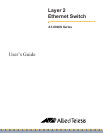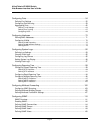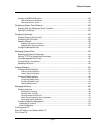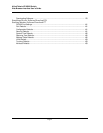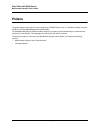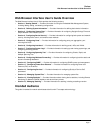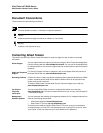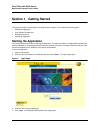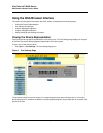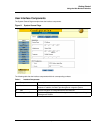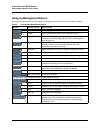
Preface
Web Browser Interface User’s Guide Overview
Page 7
Page 7
Web Browser Interface User’s Guide Overview
The Web Browser Interface User’s Guide provides the following sections:
• Section 1,“Getting Started” — Provides information for using the Embedded Web Management System,
including adding, editing, and deleting configurations.
• Section 2, “Defining System Information” — Provides information for defining basic device information.
• Section 3, “Configuring System Time” — Provides information for configuring Daylight Savings Time and
Simple Network Time Protocol (SNTP).
• Section 4, “Configuring Device Security” — Provides information for configuring both system and network
security, including traffic control, and switch access methods.
• Section 5, “Configuring Ports” — Provides information for configuring ports, port aggregation, port
mirroring and LACP.
• Section 6, “Configuring Interfaces” — Provides information for defining ports, LAGs, and VLANs.
• Section 7, “Configuring System Logs” — Provides information for setting up and viewing system logs, and
configuring switch log servers.
• Section 8, “Configuring Spanning Tree” — Provides information for configuring Classic, Rapid, and
Multiple Spanning Tree.
• Section 9, “Configuring Multicast Forwarding” — Provides information for configuring both the static and
dynamic forwarding databases.
• Section 10, “Configuring SNMP” — Provides information for configuring SNMP access and management.
• Section 11, “Configuring Power Over Ethernet” — Provides information for configuring Power over
Ethernet (PoE) on the device.
• Section 12, “Configuring Services” — Provides information for configuring Quality of Service CoS
parameters.
• Section 13, “Managing System Files” — Provides information for managing system files.
• Section 14, “Viewing Statistics” — Provides information about viewing device statistics, including Remote
Monitoring On Network (RMON) statistics, and device history events.
• Section 15, “Managing Stacking” — Provides information for stacking, including a stacking overview.
Intended Audience
This guide is intended for network administrators familiar with IT concepts and terminology.



